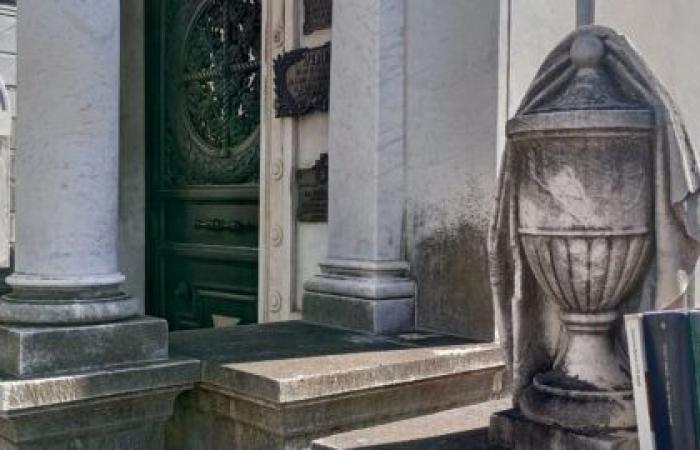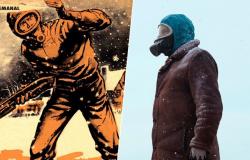The city lives in hundreds of books that allow us Know Buenos Aires With other eyes.
The Argentine capital has been the inspiration of famous writers and today we will immerse ourselves in a selection of ten books for Know Buenos Aires through literature.
“Do you think possible, lieutenant, that the cascarudos have already occupied the stadium?”
That question is the prelude to an epic battle of Argentine history between humans and strange beings, cascarudos. Of course, it is not real, but part of the graphic novel created in 1957 by Héctor Oesterheld.
The story takes place in a Buenos Aires devastated by an extraterrestrial invasion: from the Obelisk to the Monumental stadium. Here we leave them step by step of this exciting crosswalk, newly adapted by Netflix.
-
Hopscotchmeet Buenos Aires with Cortázar
In 1963 Julio Cortázar published his most famous novel, divided between a melancholic Paris and a Bohemian Buenos Aires. This shows the deep connection that Cortázar had with its origins, beyond living in France for years. As he writes in Rayuela: “In Paris everything was Buenos Aires and vice versa.”
His words are an invitation to Know Buenos Aires con A neighborhood atmosphere, endless and delicious streets cafés.
Prepare to explore a labyrinthine Buenos Aires by Ernesto Sabato. In his Blind report, From 1961, he delights us with an obsessive persecution for the Banks neighborhood.
“Their steps resonated and were taking a more secret and perverse personality at every moment. Thus we descended to Leandro Alem and, after crossing the avenue, we headed towards the port area”
If you want to experience the fascinating contrast between Sabato’s work and the streets of the microcentro, we invite you to follow this Unmissable circuit.
-
Know Buenos Aires with El Fervor of Borges
Nothing better than Know Buenos Aires with the poetry of Jorge Luis Borges. In this work the author immortalized the Recoleta cemetery, the suburbs and the Plaza San Martín.
“Beautiful are the graves,
The Latin nude and the locals fatal dates,
The conjunction of marble and flower”
According to Borges himself, his whole life has elapsed rewriting the book that includes “La Recoleta”, BUENOS AIRESwhich was published more than a hundred years ago, but maintains its validity and dialogues with the present. Know Buenos Aires Through Borges it is always a unique experience.
To start this tour we must travel with Roberto Arlt to a Buenos Aires of the 20s.
“The cars slid down Corrientes Street sparkling under the sun, many people passed to their work, and under the yellow awnings the face of women appeared rogged”
Arlt appropriated emblematic places as the scenario of one of his most wonderful works, many of which continue to exist today.
In this 1954 book Adolfo Bioy Casares invites us to carnaval in a Buenos Aires of masks, mysteries and sealed destinations.
“when they followed the ceremonious man in black, among masks who danced, shouted and played insistent and inexpressive whistles -or expressive of his pure insistence -, Clara wondered if he would be entering a magical room”
This book, cross between realism and fantastic literature, is the ideal excuse to know the famous carnivals of Buenos Aires, an emblematic event of the city.
This compilation of Alejandra Pizarnik, from the year 2000, reflects her introspective vision of Buenos Aires and invites us to snack in front of the river to read her poems.
“Yeah. Sink one night in the streets of the port. Walk, walk …
Yes. Alone. Always alone. Slowly, very slowly”
In your words you can glimpse your relationship with Buenos Aires as a disagreement space, where loneliness lives.
This novel by Ricardo Piglia, published in 1992, police mix, science fiction and policy to represent a Buenos Aires crossed by memory and repression.
“” Always watch, even if useless, “Junior thought. The sky was gray; at four except ten the presidency helicopter passed on the avenue towards the river. Junior looked at the time and got into the subte. Address Plaza de Mayo”
The book, which plays with the idea of a unfolded city, mentions places like Retiro, San Martín Square and the city’s secret passages.
Rodolfo Walsh surprised again with this story published in 1966, which tells a clandestine conversation about the whereabouts of Eva Perón’s body.
“From the great window of the tenth floor you can see the city in sunset, the pale lights of the river. From here it is easy to love, even momentarily, to Buenos Aires. But it is no conceivable form of love that has gathered us”
Knowing Buenos Aires from the heights, becomes the stage where power, history and mystery play a decisive bracelet.
In this collection of stories by Silvina Ocampo, published in 1987, Buenos Aires appears as the framework of its inexhaustible creativity.
“You run away through the busiest streets in Buenos Aires, at the fall of a night like this, when the ladies go to the Colón Theater because it is a gala night and if you, by admiring them, feel a very particular attraction for them, give themselves in your arms to the most delicious caresses”
Thus we close with these ten different looks for Know Buenos Aires, So incredible as to be part of fiction, such real ones that echo our own lives.







